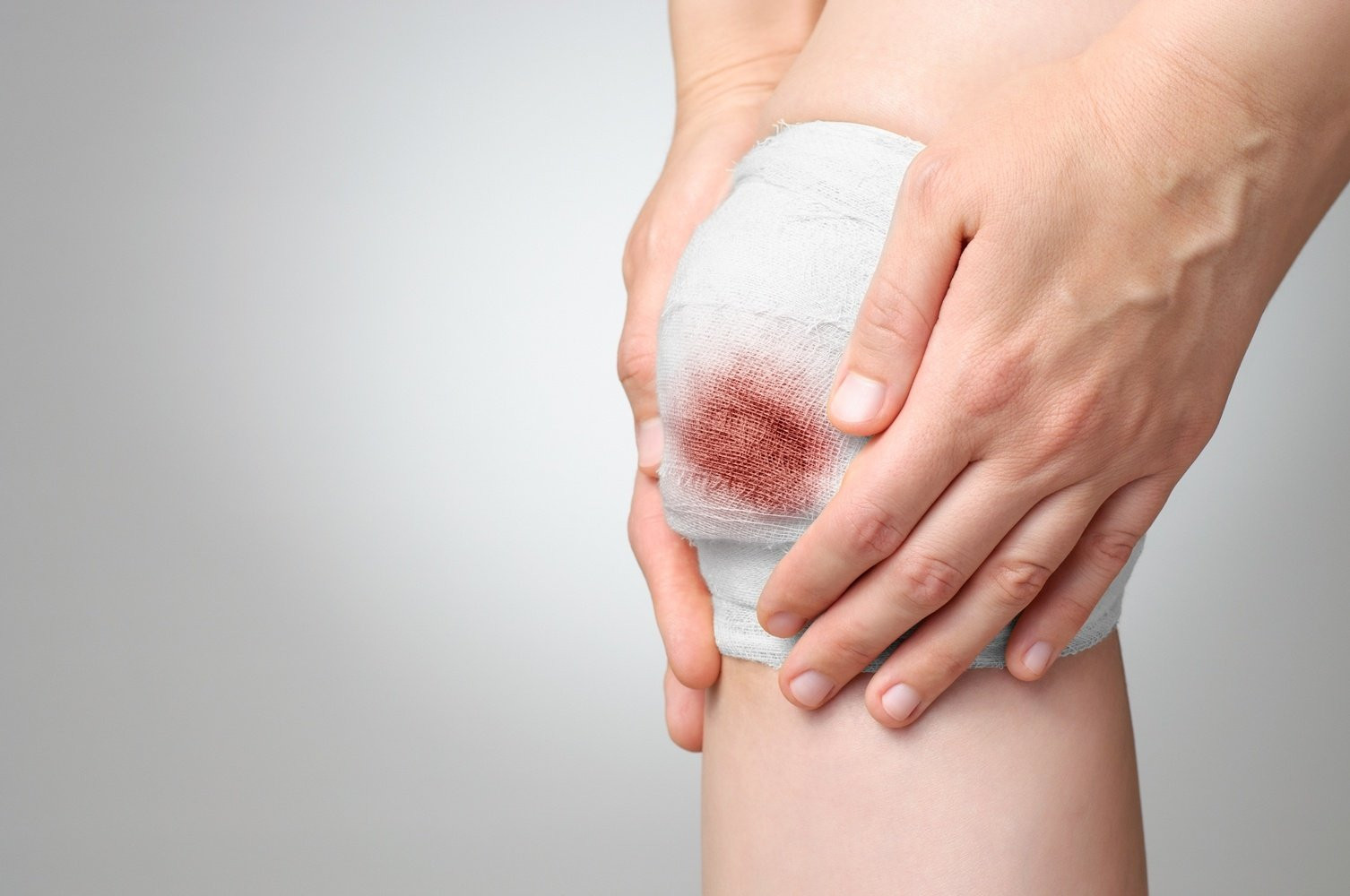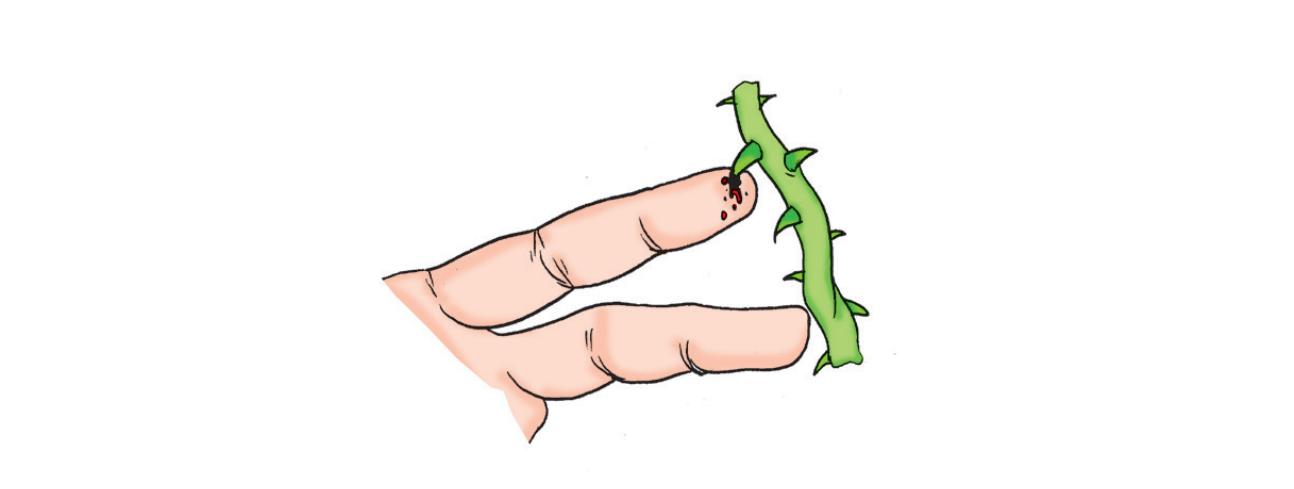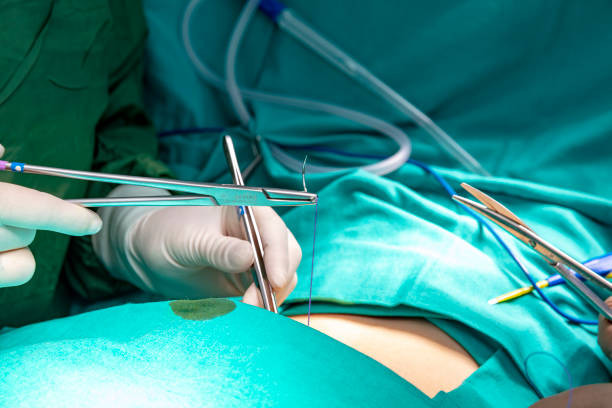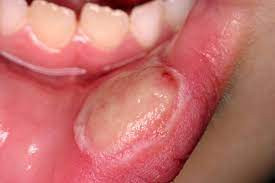Definisi
Vulnus ekskoriatum atau luka lecet adalah luka terbuka yang disebabkan oleh gesekan antara kulit dan benda kasar. Sebagian besar luka lecet akan sembuh tanpa meninggalkan bekas apabila hanya mempengaruhi bagian kulit terluar (epidermis). Namun, apabila luka lecet mencapai kulit bagian dalam (dermis), luka ini dapat meninggalkan bekas ketika sembuh.
Penyebab
Luka lecet memiliki tiga tipe besar, yaitu:
- Linear atau berbentuk garis. Luka lecet ini dibentuk oleh goresan yang melukai epidermis. Luka lecet jenis ini paling sederhana dan sembuh tanpa meninggalkan bekas. Luka lecet ini sangat penting dalam aspek hukum apabila ditemukan pada leher, paha bagian dalam, dan di dekat kemaluan. Luka berbentuk garis atau setengah lingkaran biasanya ditemukan sebagai akibat dari cakaran kuku. Keberadaan luka ini di dekat kemaluan dapat menandakan adanya kekerasan seksual. Sementara itu, keberadaan luka ini di leher dapat menandakan adanya strangulasi (pencekikan)
- Luka baret. Luka ini dapat bervariasi bentuknya, dan biasanya terjadi akibat gesekan dengan benda lebar dan kasar, misalnya aspal jalan. Luka ini paling sering ditemukan pada kecelakaan lalu lintas dan cedera olahraga. Luka baret disebabkan oleh gesekan antara bagian tubuh dengan permukaan kasar, yang mengangkat epidermis. Kedalaman luka baret tergantung oleh ketidakteraturan permukaan dan kecepatan tubuh saat bergesekan dengan benda tersebut.
- Luka berpola. Luka ini biasanya terjadi akibat gaya yang tegak lurus pada epidermis sehingga “menjiplak” benda yang mengenai kulit. Luka ini dapat dibagi lagi menjadi luka akibat tekanan dan luka akibat benturan, tergantung lama kontak dengan permukaan benda. Luka tekan terjadi karena tekanan yang cukup lama pada epidermis, namun gaya tekan tersebut biasanya kecil. Misalnya, luka pada leher akibat gantung diri akan “menjiplak” benda yang digunakan. Sementara itu, luka benturan terjadi akibat benturan yang cepat dengan gaya yang cukup besar. Luka seperti ini biasanya ditemukan pada kecelakaan lalu lintas yang melibatkan mobil dan pejalan kaki.
Faktor Risiko
Vulnus ekskoriatum dapat terjadi pada semua orang tanpa memandang usia atau jenis kelamin. Selain itu, kondisi ini biasanya terjadi sebagai akibat dari kecelakaan. Luka dapat terjadi secara disengaja maupun tidak disengaja. Penyebab luka yang disengaja dapat berupa kekerasan fisik. Sementara itu, penyebab luka yang tidak disengaja biasanya terkait dengan olahraga dan jatuh.
Gejala
Vulnus ekskoriatum termasuk dalam kehilangan jaringan kulit (abrasi kulit). Abrasi kulit sendiri terbagi atas 3 derajat, yaitu:
- Derajat satu: abrasi kulit ini melibatkan kerusakan kulit pada epidermis, yang merupakan lapisan terluar kulit. Abrasi kulit jenis ini biasanya tidak menyebabkan perdarahan. Biasanya, dokter menyebut abrasi kulit jenis ini sebagai erosi
- Derajat dua: abrasi kulit jenis ini melibatkan kerusakan pada epidermis dan dermis (bagian kulit dalam). Perdarahan ringan terjadi pada abrasi kulit ini. Abrasi kulit jenis ini biasanya disebut sebagai ekskoriasi atau vulnus ekskoriatum
- Derajat tiga: abrasi kulit jenis ini merupakan yang terdalam, menyebabkan kerusakan pada jaringan kulit yang lebih dalam dibandingkan dermis. Abrasi jenis ini biasanya menyebabkan perdarahan yang cukup banyak dan membutuhkan terapi medis yang lebih mendalam. Abrasi jenis ini biasanya disebut sebagai avulsi
Diagnosis
Dalam mendiagnosis vulnus ekskoriatum, dokter dapat menanyakan riwayat terjadinya luka, misalnya waktu, penyebab, dan cara luka terjadi. Dokter juga dapat menanyakan status imunisasi tetanus (DT, Td, TT, Tdap) Anda. Sebagai trauma, dokter juga mungkin akan mencari adanya luka di bagian tubuh lainnya, terutama apabila luka disebabkan oleh jatuh. Beberapa kondisi tertentu dapat meningkatkan kecurigaan dokter terhadap adanya kekerasan, misalnya posisi luka di tempat yang tertutup pakaian atau di dekat kelamin. Dokter juga akan memeriksa lokasi, bentuk, warna, dan ukuran luka, serta keberadaan benda asing pada luka.
Tata Laksana
Vulnus ekskoriatum biasanya dapat ditangani sendiri. Anda dapat melakukan pertolongan pertama dengan cara sebagai berikut:
- Mencuci tangan. Hal ini mampu mencegah infeksi
- Menghentikan perdarahan. Perdarahan pada luka lecet biasanya dapat berhenti dengan sendirinya. Jika dibutuhkan, Anda dapat menekan bagian yang luka dengan perban atau kain bersih dengan lembut dan mengangkat bagian yang luka hingga perdarahan berhenti
- Membersihkan luka. Anda dapat membilas luka dengan air. Anda juga dapat membiarkan luka di bawah air mengalir untuk mencegah infeksi. Kemudian, Anda dapat membersihkan daerah sekitar luka dengan sabun, namun usahakan agar tidak kena luka. Sebaiknya, Anda tidak menggunakan zat seperti hidrogen peroksida atau iodine, karena dapat mengiritasi luka. Jika ada kotoran pada luka, Anda dapat membawa penderita ke IGD terdekat
- Memberikan antibiotik. Anda dapat mengoleskan salep antibiotik untuk mempertahankan kelembapan kulit dan mencegah terbentuknya bekas luka. Salep yang dapat Anda gunakan misalnya adalah basitrasin. Namun, sebaiknya Anda berhenti apabila muncul ruam pada kulit akibat penggunaan salep
- Menutup luka. Anda dapat menutup luka dengan plester untuk menjaganya tetap bersih. Jika luka hanya tergores sedikit, Anda boleh tidak menutup luka tersebut
- Mengganti penutup luka. Anda dapat melakukan ini sehari sekali atau ketika perban/plester tampak basah atau kotor
- Suntik tetanus. Anda perlu mendapatkan suntik tetanus apabila Anda belum disuntik tetanus selama 5 tahun terakhir atau apabila luka tampak kotor atau dalam
- Waspada dengan tanda infeksi. Tanda infeksi dapat berupa nanah, kemerahan pada kulit, nyeri yang semakin parah, serta demam
Komplikasi
Vulnus ekskoriatum dapat sembuh dengan cukup cepat, namun memiliki kemungkinan terinfeksi atau meninggalkan bekas luka. Untuk mencegahnya, Anda sebaiknya menangani luka sesaat setelah Anda mengalaminya. Anda juga sangat disarankan untuk menjaga agar luka bersih dan mengorek bagian luka yang dalam proses penyembuhan. Salah satu komplikasi vulnus ekskoriatum yang tidak diinginkan adalah infeksi. Tanda infeksi dapat berupa:
- Luka yang tidak kunjung sembuh
- Kulit yang terasa nyeri atau iritasi
- Nanah yang berbau tidak sedap keluar dari luka
- Nanah berwarna hijau, kuning, atau coklat
- Demam yang terjadi lebih dari 4 jam
- Benjolan yang terasa nyeri pada ketiak atau selangkangan
Pencegahan
Pencegahan vulnus ekskoriatum dapat dilakukan dengan menggunakan alat pelindung diri yang sesuai saat berolahraga dan bekerja. Selain itu, pencegahan jatuh (terutama pada anak dan lanjut usia) dapat dilakukan dengan pemasangan pengaman di rumah. Pengaman untuk anak dapat berupa pagar di dekat tangga agar anak tidak dapat mengakses tangga, sementara pengaman untuk lanjut usia dapat berupa handrail dan kruk untuk membantu menopang tubuh.
Kapan Harus ke Dokter?
Vulnus ekskoriatum biasanya tidak memerlukan bantuan dokter. Sebaiknya Anda segera ke IGD terdekat jika kulit tampak robek cukup parah, atau ketika:
- Perdarahan tidak berhenti setelah lima menit penekanan
- Perdarahan cukup banyak dan deras
- Luka disebabkan oleh kekerasan atau cedera misalnya akibat kecelakaan lalu lintas
Anda juga dapat berkonsultasi kepada dokter apabila Anda menduga adanya infeksi pada luka Anda. Infeksi yang dibiarkan dapat menyebar ke bagian tubuh lainnya dan menyebabkan kondisi medis yang lebih parah. Dokter dapat membersihkan dan menutup luka, serta memberikan antibiotik minum atau oles untuk membantu penyembuhan luka. Jika dibutuhkan, dokter juga dapat menjahit luka terbuka atau mengambil kulit dan jaringan sekitarnya yang terinfeksi atau mati.
Mau tahu informasi seputar penyakit lainnya? Cek di sini, ya!
- dr Anita Larasati Priyono
Cuts and scrapes: First aid. (2021). Retrieved 19 May 2022, from https://www.mayoclinic.org/first-aid/first-aid-cuts/basics/art-20056711
Jay, K., & Sampson, S. (2018). Abrasion: Home Treatment, Symptoms, Recovery, and More. Retrieved 19 May 2022, from https://www.healthline.com/health/abrasion
Shrestha, R., Krishan, K., & Kanchan, T. (2021). Abrasion. Retrieved 19 May 2022, from https://www.ncbi.nlm.nih.gov/books/NBK554465/











